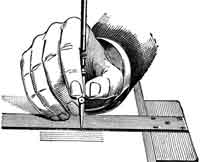
Why do Cakes sink in the middle?
Everyone knows that cake gets doughed when it is baked in the Oven. Some cakes melt off before they are baked while some cakes get smoothened up before they are baked for spreading evenly. There are pipes in which cakes are made and obtain pipe shape before they are baked to become soft and puffy. The cakes expand when they are added with baking soda or baking powder. Yeast also can make the cake to rise up in size and volume. Yogurt or beer or gingerale might have effect on the cake as that of yeast. Cake batters are prepared before they are baked in the oven. The cakes after baking bulge due to the chemical reaction with the egg white that was added to the recipe.
The ingredients in the cake are very important that give them a proper shape. The batters of Honey Cake and Guinness Gingerbread were very much liquid and used volatile liquids to carry out the process of cake making. Volatile liquids are not flammable but, they do not hold the cake to the air stiffly. Due to this reason cakes sink in the middle. The batter that was too liquid could not hold the cake and its structure could not be intact. Hence, the cake sinks somewhere in the middle.
Honey cake has honey in it apart from the liquidity. Guinness and molasses consist of high amount of acids, and if their batter is at correct temperature and is in the right baking container then the sinking will not occur. The batter that is more like liquid should be put in shallow vessels for baking as the heat will get distributed evenly and quickly. This will allow the cake to get baked efficiently.
The acidic, volatile and liquid batters in the cake make the cake not to rise high up. So, the cake lies very low in deep vessels whatever amount of egg white or leavening elements are added. The cake sinks because it tries in vain to expand as much to maintain the structure. Hence, it sinks in the middle.












Leave a Reply